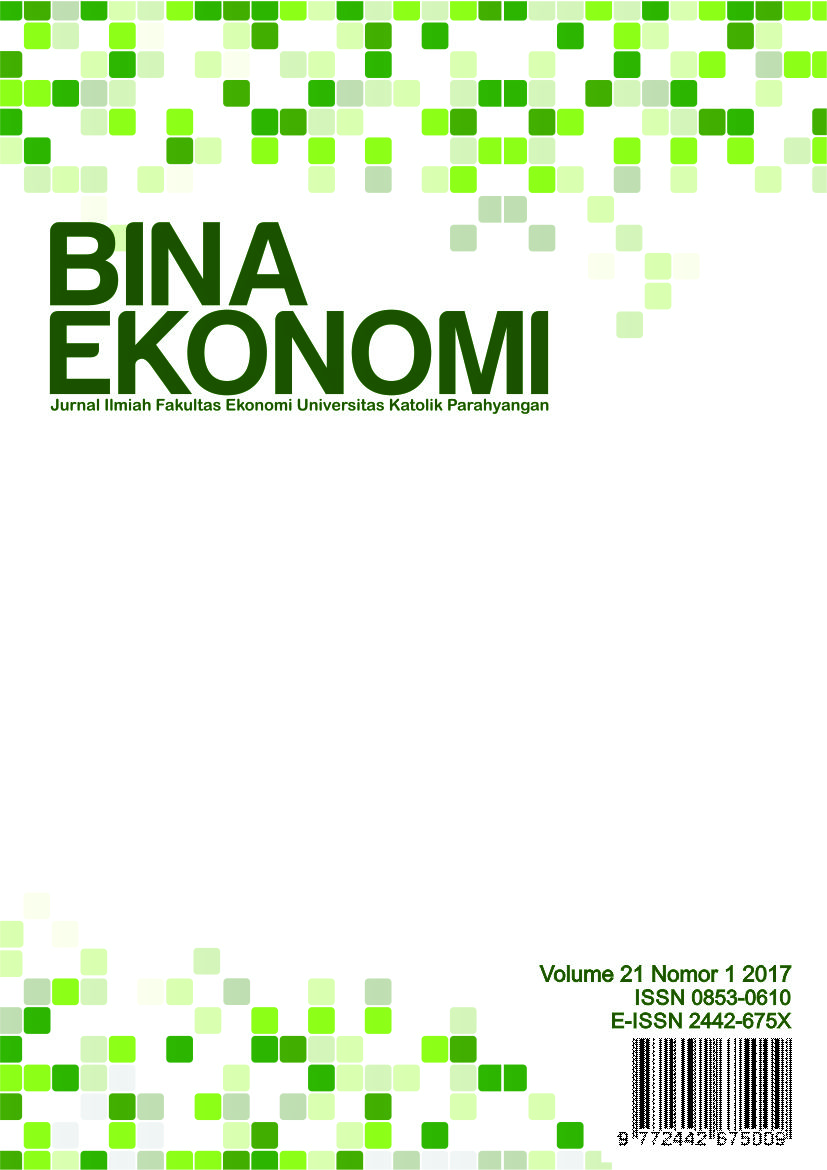Kompetisi dan Efisiensi Bank Umum di Indonesia Periode 2008 - 2013
DOI:
https://doi.org/10.26593/be.v21i1.2619.1-12Abstract
There are two point of views regarding the relationship between competition and efficiency, namely SCP hypothesis and Efficient Structuree Hypothesis. By using the data of 107 Indonesian conventional banks within the period of 2008-2013, the obtained result supports the SCP Hypothesis where the competition level in the banking industry will affect the level of bank efficiency in Indonesia. The result of impulse response function shows that the more competitive banking industry, the more efficient the banks in Indonesia. Another conclusion of this research is the differences in efficiency indicators do not affect the conclusion about the relationship between competition and bank efficiency.
Keywords: Bank, Competition, Efficiency, Indonesia
References
Abrigo, M. D., & Love, I. (2016). Estimation of panel vector autoregression in stata. Stata Journal, 16(3), 778-804.
Andries, A. M., & Capraru, B. (2012). Competition and efficiency in EU 27 banking system. Baltic Journal of Economics, 12(1), 41-60.
Ariefianto, M. D. (2012). Ekonometrika : Esensi dan Aplikasi dengan Menggunakan Eviews. Jakarta: Erlangga.
Berger, A. N., & Mester, L. J. (1997). Inside the black box: What explains differences in the efficiencies of financial institutions? Journal of Banking and Finance, 21, 895-947.
Casu, B., & Girardone, C. (2009). Testing the relationship between competition and efficiency in banking: A panel data analysis. Economics Letters, 105(1), 134-137.
Ferreira, C. (2013). Bank Market concentration and bank efficiency in the European Union: A panel granger causality approach. International Economics and Economic Policy, 10, 365-391.
Iveta, R. (2012). Market power in the Czech banking sector. Journal of Competitiveness, 4(1), 143-155.
Jonas, M. R., & King, S. K. (2008). Bank efficiency and the effectiveness of monetary policy. Contemporary Economic Policy, 26(4), 579-589.
Kusuma, C., & Adita, C. (2015). The dynamics of Indonesian banking competition 2006–2013. Bina Ekonomi, 19(1), 26-42.
Matthews, K., & Thompson, J. (2008). The Economics of Banking (2nd Ed). Chichester, West Sussex, England: J. Wiley.
Maudos, J., Pastor, J. M., Perez, F., & Quesada, J. (2002). Cost and profit efficiency in European banks. Journal of International Financial Markets, Institutions and Money, 12(1), 33-58.
Pessarossi, P., & Weill, L. (2013). Do capital requirements affect bank efficiency? Evidence from China. BOFIT discussion papers, 4-27.
Schaeck, K., & Cihak, M. (2008). How does competition affect efficiency and soundness in banking? New empirical evidence. Retrieved from http://www.ecb.europa.eu/pub/pdf/scpwps/ecbwp932.pdf.
Tan, Y., & Floros, C. (2014, Summer). Risk, profitability, and competition: Evidence from the Chinese banking industry. Journal of Developing Areas, 38(3), 303-319.
Vivas, A. L. (1997). Profit efficiency for Spanish savings banks. European Journal of Operational Research, 98(2), 381-394.
Weill, L. (2004). On the relationship between competition and efficiency in the EU banking sectors. Kredit und Kapital, 37(3), 329-352.


